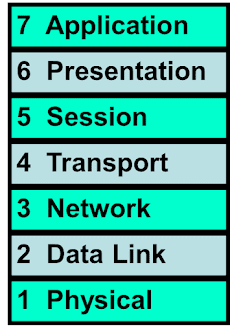The OSI MODEL Explained
The OSI MODEL Explained
To address and Fix the problem of networks increasing in size and in large number, the (ISO) International Organization for Standardization researched many network schemes and recognized that there was a need to create a network model that would help builders of network implement networks that could communicate and work together and therefore, releasing the OSI reference model in 1984.
In another word
The OSI model, short for Open Systems Interconnection model, is a conceptual framework created by the International Organization for Standardization (ISO) that defines how data is transmitted over a network. It's a widely used reference model that provides a common language for understanding network communication, even though specific implementations might slightly differ.
ISO - International Organization for Standardization
OSI - Open System Interconnection
IOS - Internetwork Operating System
The ISO - International Organization for Standardization
created the OSI - Open System Interconnection to make the IOS - Internetwork Operating System more efficient. The “ISO” acronym is correct as shown.
Imagine a seven-layer cake, where each layer represents a specific set of networking functions and protocols. Data travels down from the top layer (application) on the sending device, going through each layer and getting encapsulated with additional information, to the physical layer where it's transmitted over the network cable. On the receiving device, the data travels up the layers in reverse order, with the headers being removed at each layer to reveal the original data.
Here's a breakdown of the seven layers of the OSI model:
Layer 7: Application Layer
This is the topmost layer, directly interacting with user applications like web browsers, email clients, or file transfer programs.
It focuses on providing network services to the applications and deals with high-level protocols like HTTP, FTP, and SMTP.
Layer 6: Presentation Layer
Prepares the data for the application layer by handling data formatting and encryption/decryption.
It ensures that the data is presented in a way that the receiving application can understand, regardless of the underlying hardware or software differences.
Layer 5: Session Layer
Establishes, manages, and terminates sessions between communicating applications.
It ensures that data is exchanged in an orderly way and synchronizes communication between applications.
Layer 4: Transport Layer
The transport layer Provides reliable data transfer between applications on different devices.
It breaks down data into smaller packets, manages sequencing and error checking, and ensures the complete and accurate delivery of data. Protocols like TCP and UDP reside at this layer.
Layer 3: Network Layer
Handles logical addressing and routing of data packets across networks.
It determines the best path for data to travel and forwards packets to the appropriate network destination. The internet protocol (IP) operates at this layer.
Layer 2: Data Link Layer
Provides error-free transmission of data frames between physically connected devices on a network segment.
It handles addressing at the hardware level (MAC addresses) and detects errors in data transmission.
Layer 1: Physical Layer
The bottom layer, responsible for the physical transmission of data bits over a physical medium like cables or wireless signals.
It defines the electrical or optical specifications for receiving and transmitting data.
The OSI model serves as a foundational concept for network communication, even though real-world network protocols might not strictly adhere to a seven-layer structure. It provides a valuable tool for troubleshooting network issues and understanding how data flows across networks.



Comments
Post a Comment